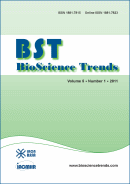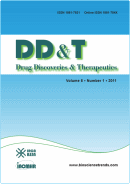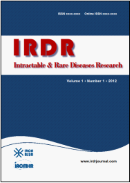BioScience Trends. 2007;1(1):52-61.
Nucleotide sequence context influences HIV replication fidelity by modulating reverse transcriptase binding and product release.
Yamanaka R, Termini J
An RNA template/DNA primer (T/P) complex derived from the env gene of HIV-1 was used to examine the kinetic effects of specific basepair substitutions on dNTP incorporation and RNase H cleavage by HIV-1 reverse transcriptase (RT). Single basepair substitutions 2 or 6 nucleotides upstream from a defined polymerization site (denoted -2 and -6) were engineered by oligonucleotide synthesis to provide 7 T/P substrates for kinetic analysis. A -6 A/T substitution in the wild type sequence resulted in 14- and 7-fold increases in the apparent second order rate constants (k2app) for U/A and U/G basepair formation. The k2app for U/A formation was relatively unchanged for all other T/P basepair changes. The -6A/T substitution also uniquely lowered the RNase H cleavage rate by 3-fold. Combined kinetic and thermodynamic analyses indicated that these effects were due almost exclusively to increases in the KD (koff/kon) of initial binding of RT to the T/P and the rate of product release. The data suggest that certain sequence contexts may influence RT fidelity by modulating enzyme binding/dissociation rather than by altering dNTP binding affinity or the rate of the bond forming step.







